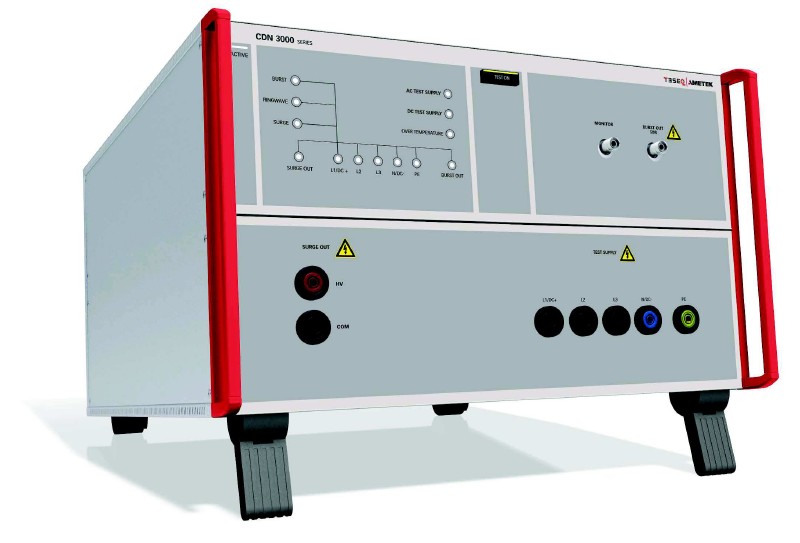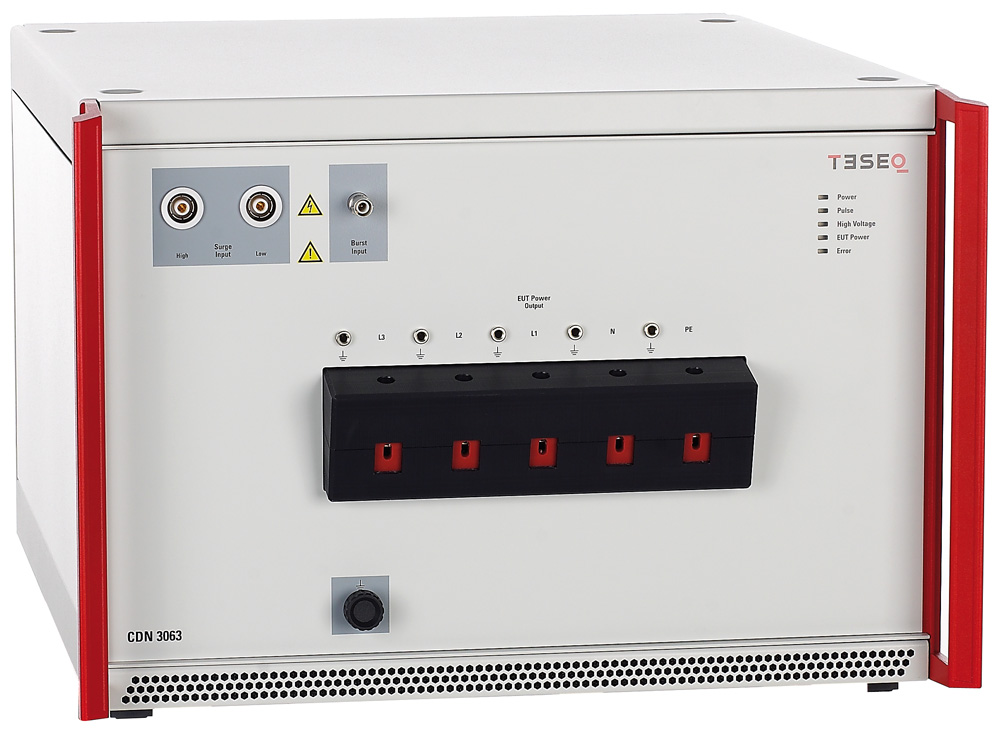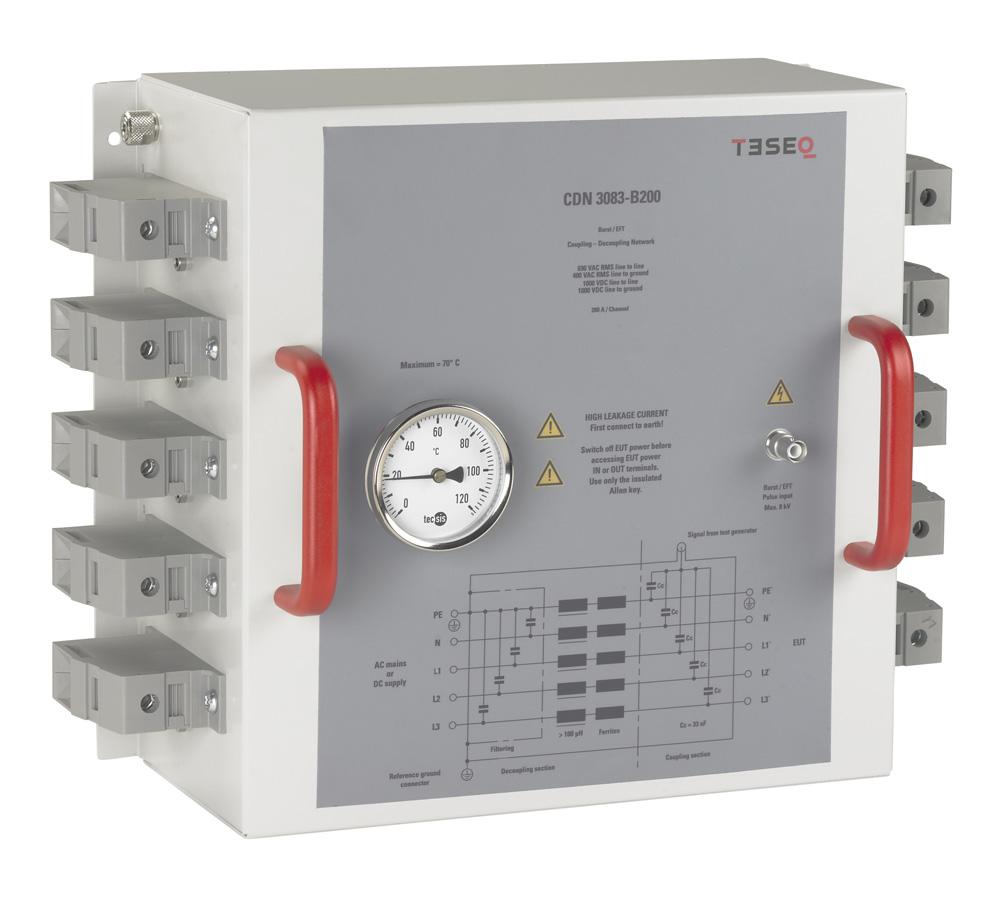
- Frequency range 30 to 300 MHz
- 10 Amps, M2 or M3 version with banana sockets for 520 V, M3 version with US/JP socket for 125 V
- Conform with CISPR 15 ed.9, CISPR 16-1-2 and CISPR 16-2-1
- Outperforms the requirements of the CDN method of older CISPR 15 versions
- Excellent performance
- Calibration kit available
Description
CISPR 15 edition 9 offers different methods for the measurement of radio disturbance characteristics of electrical lighting equipment. One of these is the CDNE method. This method specifies the use of a coupling?/?decoupling network for emission measurement (CDNE) to measure disturbance voltages in the
30 to 300 MHz frequency range. This method enables EUTs to be connected directly to the CDNE, allowing a single conducted emission measurement to replace a lengthy radiated emission test.
The Teseq CDNEs are compliant with the actual versions of CSIPR 16-1-2, CISPR 16-2-1 and CISPR 15 edition 9.
Using a CDNE instead of CDN offers improved measurement reproducibility due to standard’s requirements for more restrictive limits of asymmetrical impedance, phase angle, symmetrical impedance and internal attenuation.
CISPR 15 edition 9 requires the termination of the mains supply cable of the EUT with a CDNE positioned on the reference-ground plane for the OATS, SAC or FAR measurement method. The receiver port of the CDNE is terminated with a 50 Ω impedance.
| Parameter | Value |
|---|---|
| Frequency range | 30 to 300 MHz |
| Power rating (EUT- and AE port) | AC max. voltage (line to line) for CDNE M210, CDNE M310: 520 V |
| Current max | 10 A |
| Mains sockets (EUT- and AE port) | 4 mm, safety banana |
| Mains sockets (EUT- and AE port) for CDNE M310-USJP | NEMA 5-15/IEC C14 |
| Common mode impedance (EUT port) | 150 Ω +10/-20 Ω |
| Phase angle (EUT port) | 0° ±25° |
| Differential mode impedance (EUT port) | 100 Ω ±20 Ω |
| Common mode impedance (EUT port) | 150 Ω +10/-20 Ω |
| Transducer factor/Voltage division factor (EUT/RF port) incl. internal 10 dB attenuator: | 20 dB ±1.5 dB |



